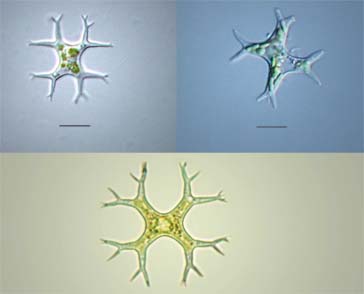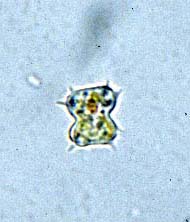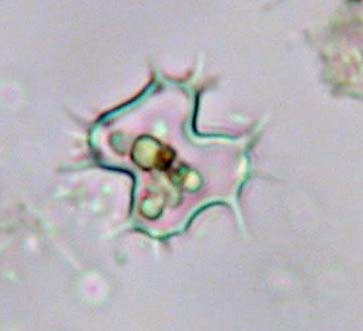- Home
- Nieuws
- Verslagen
- Excursies
- 2018 Heerenven
- 2017 De Banen
- 2016 Buitengoor
- 2014 Schwemm Oostenrijk
- 2013 winkelsven
- 2012 De Teut
- 2011 Huis ter Heide
- 2010 Weerribben
- 2009 Tsjechie
- 2008 Valkenhorst
- 2007 de Wieden
- 2006 Kienveen & Teeselinkven
- 2005 Dwingelo
- 2004 Staverden
- 2003 de Wieden
- 2002 Westbroekse Zodden
- 2001 Oisterwijk
- 2000 Ankeveen & Het Hol
- Winterbijeenkomsten pdf bestanden
- Verslag 2024
- Verslag 2022
- Verslag 2021
- Verslag 2020
- Verslag 2019
- Verslag 2018
- Verslag 2017
- Verslag 2016
- Verslag 2015
- Verslag 2014
- Verslag 2013
- Verslag 2012
- Verslag 2011
- Verslag 2010
- Verslag 2009
- Verslag 2008
- Verslag 2007
- Verslag 2006
- Verslag 2005
- Verslag 2004
- Verslag 2003
- Verslag 2002
- Verslag juni 2001
- Verslag februari 2001
- Verslag 2000
- Verslag 1999
- Excursies
- Links
- Literatuur
- Desmid soorten
- A-G
- Actinotaenium
- Bambusina
- Closterium
- Cosmarium
- angulare
- amoenum
- anceps
- biretum
- botrytis
- brebissonii
- brookii
- caelatum
- cataractarum
- commissurale
- connatum
- conspersum
- cosmarioides
- crenulatum
- cyclicum
- denboeri
- dickii
- difficile
- excavatum
- fontigenum
- formosulum
- granatoides
- granatum
- hexalobum
- holmiense
- impressulum
- humile
- margaritiferum
- meneghinii
- microsphinctum
- monomazum
- nasutum
- nymannianum
- obliquum
- obsoletum
- obtusatum
- ornatum
- ovale
- pachydermum
- paragranatoides
- perforatum
- pericymatium
- pokornyanum
- portianum
- protractum
- pseudoconnatum
- pseudoinsigne
- pseudopyramidatum
- punctulatum
- pyramidatum
- quinarium
- ralfsii
- regnellii
- regnesi
- reniforme
- sphyrelatum
- striolatum
- subexcavatum
- subgranatum
- subprotumidum
- taxichondriforme
- tetrachondrum
- turpinii
- ungarianum var. subtriplicatum
- venustum
- Cosmocladium
- Cylindrocystis
- Desmidium
- Docidium
- Euastrum
- Gonatozygon
- H-R
- S-X
- Sphaerozosma
- Spirotaenia
- Spondylosium
- Staurastrum
- alternans
- arachne
- bloklandiae
- brachiatum
- brebissonii
- brevispina
- chaetoceras
- cingulum
- controversum
- crassangulatum
- diacanthum
- dilatatum
- echinatum
- elongatum
- furcatum
- furcigerum
- habeebense
- heimerlianum
- hirsutum
- hystrix
- inconspicuum
- lapponicum
- levanderi
- margaritaceum
- monticulosum
- pileolatum
- pingue
- polytrichum
- punctulatum
- pyramidatum
- scabrum
- sexcostatum
- spongiosum
- teliferum
- tetracerum
- vestitum
- Staurodesmus
- Teilingia
- Tetmemorus
- Tortitaenia
- Xanthidium
- A-G
- Jaar
- 2024
- 2023
- december - Closterium praelongum
- november - Cosmarium microsphinctum
- oktober - Cosmarium pokornyanum
- september - Staurastrum inconspicuum
- augustus - Cosmarium crenulatum
- juli - Euastrum subalpinum
- juni - Staurastrum levanderi
- mei - Cosmarium microsphinctum
- april - Closterium subscoticum
- maart - Cosmarium impressulum
- februari - Cosmarium angulare
- januari - Staurastrum heimerlianum
- 2022
- december - Closterium juncidum
- november - Cosmarium nasutum
- oktober - Cosmarium cosmarioides
- september - Staurodesmus patens
- augustus - Closterium turgidum
- juli - Cosmarium subexcavatum
- juni - Cosmarium conspersum
- mei - Cosmarium excavatum
- april - Closterium directum
- maart - Cosmarium anceps
- februari - Cosmarium biretum
- januari - Closterium baillyanum
- 2021
- december - Staurastrum cingulum
- november - Cosmarium paragranatoides
- oktober - Closterium attenuatum
- september - Cosmarium granatoides
- augustus - Cosmarium meneghinii
- juli - Cosmarium commissurale
- juni - Cosmarium pseudopyramidatum
- mei - Staurastrum pingue
- april - Pleurotaenium simplicissimum
- maart - Cosmarium ornatum
- februari - Gonatozygon aculeatum
- januari - Staurastrum monticulosum
- 2020
- december - Cosmarium granatum
- november - Staurastrum tetracerum
- oktober - Actinotaenium cucurbitinum
- september - Staurodesmus triangularis
- augustus - Cosmarium regnellii
- juli - Staurastrum hirsutum
- juni - Euastrum ansatum
- mei - Cosmarium monomazum
- april - Cosmarium regnesi
- maart - Actinotaenium pinicola
- februari - Staurastrum crassangulatum
- januari - Euastrum biscrobiculatum
- 2019
- december - Cosmarium hexalobum
- november - Euastrum pulchellum
- oktober - Cosmarium sphyrelatum
- september - Cosmarium margaritiferum
- augustus - Xanthidium tenuissimum
- juli - Euastrum denticulatum
- juni - Cosmarium caelatum
- mei - Cosmarium difficile
- april - Spirotaenia diplohelica
- maart -eStaurastrum arachne
- februari - Euastrum gayanum
- januari - Cosmarium nasutum
- 2018
- december - Actinotaenium kriegeri
- november - Staurastrum dilatatum
- oktober - Euastrum pinnatum
- september - Cosmarium pseudoconnatum
- augustus - Cosmarium connatum
- juli - Staurastrum margaritaceum
- juni - Closterium nematodes
- mei - Cosmarium pachydermum
- april - Euastrum dubium
- maart - Staurastrum lapponicum
- februari - Cosmarium humile
- januari - Actinotaenium riethii
- 2017
- december - Closterium lineatum
- november - Euastrum luetkemuelleri
- oktober - Cosmarium pyramidatum
- september - Staurastrum punctulatum
- augustus - Closterium limneticum
- juli - Tortitaenia bahusiensis
- juni - Pleurotaenium archeri
- mei - Cosmarium cyclicum
- april - Euastrum coeselii
- maart - Staurastrum pileolatum
- februari - Cosmarium obtusatum
- januari - Closterium gracile
- 2016
- december - Staurodesmus glaber
- november - Cosmarium taxichondriforme
- oktober - Heimansia pusilla
- september - Pleurotaenium nodulosum
- augustus - Euastrum lacustre
- juli - Cosmarium tetrachondrum
- juni - Euastrum insulare
- mei - Staurastrum brebissonii
- april - Closterium cornu
- maart - Actinotaenium mooreanum
- februari - Cosmarium denboeri
- januari - Cosmarium cataractarum
- 2015
- december - Staurastrum pyramidatum
- november - Staurodesmus dickiei
- oktober - Closterium moniliferum
- september - Staurastrum controversum
- augustus - Euastrum ventricosum
- juli - Actinotaenium inconspiquum
- juni - Cosmarium formosulum
- mei - Xanthidium bifidum
- april - Staurastrum brevispina
- maart - Cosmarium amoenum
- februari - Closterium acutum
- januari - Tortitaenia trabeculata
- 2014
- december - Staurastrum echinatum
- november - Micrasterias furcata
- oktober - Staur+astrum furcatum
- september - Cosmarium protractum
- augustus - Staurodesmus pterosporus
- juli - Staurodesmus omearae
- juni - Closterium calosporum
- mei - Pleurotaenium truncatum
- april - Cosmarium portianum
- maart - Sphaerozosma aubertianum
- februari - Staurastrum scabrum
- januari - Micrasterias radiosa
- 2013
- december - Staurodesmus dejectus
- november - Staurastrum alternans
- oktober - Closterium closterioides
- september - Cosmarium botrytis
- augustus - Euastrum pseudotuddalense
- juli - Staurastrum teliferum
- juni - Gonatozygon kinahanii
- mei - Xanthidium variabile
- april Actinotaenium turgidum
- maart - Haplotaenium rectum
- februari - Staurastrum vestitum
- januari - Cosmarium obsoletum
- 2012
- december - Euastrum crassum
- november - Closterium cynthia
- oktober - Hyalotheca mucosa
- september - Heimansia species
- augustus - Actinotaenium curtum
- juli - Cosmarium turpinii
- juni - Staurastrum elongatum
- mei - Pleurotaenium ehrenbergii
- april - Euastrum ampullaceum
- maart - Closterium acerosum
- februari - Roya closterioides
- januari - Cosmarium quinarium
- 2011
- december - Staurastrum sexcostatum
- november - Desmidium aptogonum
- oktober - Actinotaenium phymatosporum
- september - Cosmarium nymannianum
- augustus - Xanthiddiuum basidentatum
- juli - Closterium angustatum
- juni - Staurastrum polytrichum
- mei - Cosmarium brebissonii
- april - Actinotaenium rufescens
- maart - Closterium striolatum
- februari - Staurastrum bloklandiae
- januari - Cosmarium subprotumidum
- 2010
- december - Pleurotaenium coronatum
- november - Actinotaenium subtile
- oktober - Spharozosma filiforme
- september - Docidium undulatum
- augustusus - Xanthidium fasciculatum
- juli - Closterium navicula
- juni - Staurastrum hystrix
- mei - Cosmarium ungerianum var. subtriplicatum
- april - Euastrum insigne
- maart - Cosmarium venustum
- februari - Actinotaenium silvae-nigrae
- januari - Penium polymorphum
- 2009
- december - Desmidium baileyi
- november - Closterium pusillum
- oktober - Cosmarium perforatum
- september - Gonatozygon brebissonii
- augustus - Cosmarium ovale
- juli - Penium exiguum
- juni - Cosmocladium perissum
- mei - Euastrum binale
- april - Netrium oblongum
- maart - Cosmarium punctulatum
- februari - Tetmemorus laevis
- januari - Staurodesmus cuspidatus
- 2008
- december - Penium spirostriolatum
- november - Cosmarium reniforme
- oktober - Docidium baculum
- september - Actinotaenium cucurbita
- augustus - Xanthidium octocorne
- juli - Tetmemorus granulatus
- juni - Cosmarium obliquum
- mei - Staurastrum spongiosum
- april - Cosmarium subgranatum
- maart - Xanthidium cristatum
- februari - Cosmocladium constrictum
- januari - Micrasterias oscitans
- 2007
- december - Cylindrocystis gracilis
- november - Micrasterias denticulata
- oktober - Closterium delpontei
- september - Netrium interruptum
- augustus - Teilingia granulata
- juli - Euastrum bidentatum
- juni - Staurastrum diacanthum
- mei - Sphaerozosma vertebratum
- april - Spondylosium pulchellum
- maart - Staurodesmus extensus
- februari - Spirotaenia erythrocephala
- januari - Euastrum elegans
- 2006
- december - Closterium setaceum
- november - Actinotaenium diplosporum
- oktober - Closterium lunula
- september - Euastrum pectinatum
- augustus - Haplotaenium minutum
- juli - Gonatozygon monotaenium
- juni - Cylindrocystis brebissonii
- mei - Micrasterias jenneri
- april - Roya obtusa
- maart - Euastrum humerosum
- februari - Mesotaenium macrococcum
- januari - Xanthidium armatum
- 2005
- december - Desmidium grevillei
- november - Cosmarium pericymatium
- oktober - Xanthidium antilopaeum
- september - Bambusina brebissonii
- augustus - Mesotaenium caldariorum
- juli - Micrasterias papillifera
- juni - Micrasterias rotata
- mei - Pleurotaenium trabecula
- april - Cosmarium ralfsii
- maart - Closterium costatum
- februari - Micrasterias brachyptera
- januari - Tetmemorus brebissonii
- 2004
- december - Euastrum oblongum
- november - Staurodesmus mucronatus
- oktober - Staurastrum furcigerum
- september - Cosmarium striolatum
- augustus - Tortitaenia obscura
- juli - Spirotaenia condensata
- juni - Cosmocladium saxonicum
- mei - Micrasterias truncata
- april - Cosmarium holmiense
- maart - Penium margaritaceum
- februari - Micrasterias apiculata
- januari - Staurastrum habeebense
- 2003
- december - Netrium digitus
- november - Micrasterias pinnatifida
- oktober - Closterium aciculare
- september - Spondylosium ellipticum
- augustus - Desmidium swartzii
- juli - Micrasterias fimbriata
- juni - Actinotaenium didymocarpum
- mei - Hyalotheca dissiliens
- april - Cosmarium pseudoinsigne
- maart - Euastrum verrucosum
- februari - Staurodesmus convergens
- januari - Staurastrum brachiatum
- 2002
- Desmidiologische Mededelingen
- Biologie
- Forum
- Contact
Cell of Isthmochloron trispinatum. Notice that the isthmial region is filled in with pigment particles. Cell dimensions ca 15 x 15 µm
Another cell of Isthmochloron trispinatum. When it is empty, it can easily be confused with a desmid cell, e.g. of some small-sized Xanthidium species. |
| The xanthophyte genus Pseudostaurastrum, as the name already indicates, may be confused with the desmid genus Staurastrum. | |
 Images after Peerapornpisal (2005). |
|
References: Peerapornpisal, Y., 2005. Freshwater Algae in Northern Thailand. — The Biodiversity and Training Program (BRT), Chiang Mai, 361 pp. Skuja, H., 1948. Taxonomie des Phytoplanktons eniger Seen in Uppland, Schweden. — Symbolae Botanicae Upsaliensis 9 (3), 399 pp, 39 pls. West, W. & G.S. West, 1902. A contribution to the freshwater algae of the North of Ireland. I. — Trans. Roy. Irish Acad. 32 B(1): 1-100. |
|
![]()

